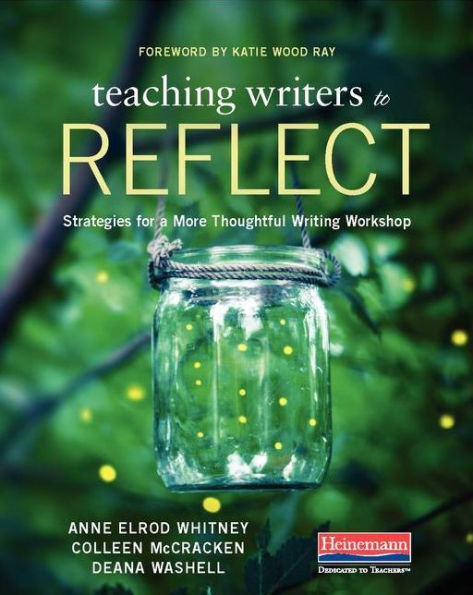Teaching Writers to Reflect shares a three step process—remember, describe, act—to help students develop as writers who know for themselves what they are doing and why. The authors argue that teaching the skill of reflection helps students:
• Build identities as writers within a community of writers
• Learn what to do when there’s a problem in their writing
• Make writing skills transferable to more than one writing situation.
With specific teaching strategies, examples of student work and stories from their own classrooms, Whitney, McCracken and Washell help you align the work of reflection with your writing workshop structure. After learning to reflect on what they do as writers, students not only can say things about the texts they have written, but also can talk about their own abilities, challenges, and the processes by which they solve writing problems.
Teaching Writers to Reflect shares a three step process—remember, describe, act—to help students develop as writers who know for themselves what they are doing and why. The authors argue that teaching the skill of reflection helps students:
• Build identities as writers within a community of writers
• Learn what to do when there’s a problem in their writing
• Make writing skills transferable to more than one writing situation.
With specific teaching strategies, examples of student work and stories from their own classrooms, Whitney, McCracken and Washell help you align the work of reflection with your writing workshop structure. After learning to reflect on what they do as writers, students not only can say things about the texts they have written, but also can talk about their own abilities, challenges, and the processes by which they solve writing problems.

Teaching Writers to Reflect: Strategies for a More Thoughtful Writing Workshop
128
Teaching Writers to Reflect: Strategies for a More Thoughtful Writing Workshop
128Paperback

